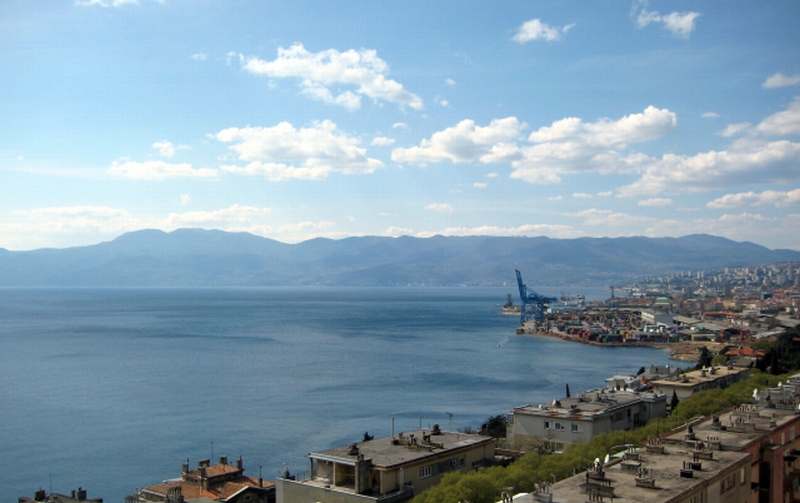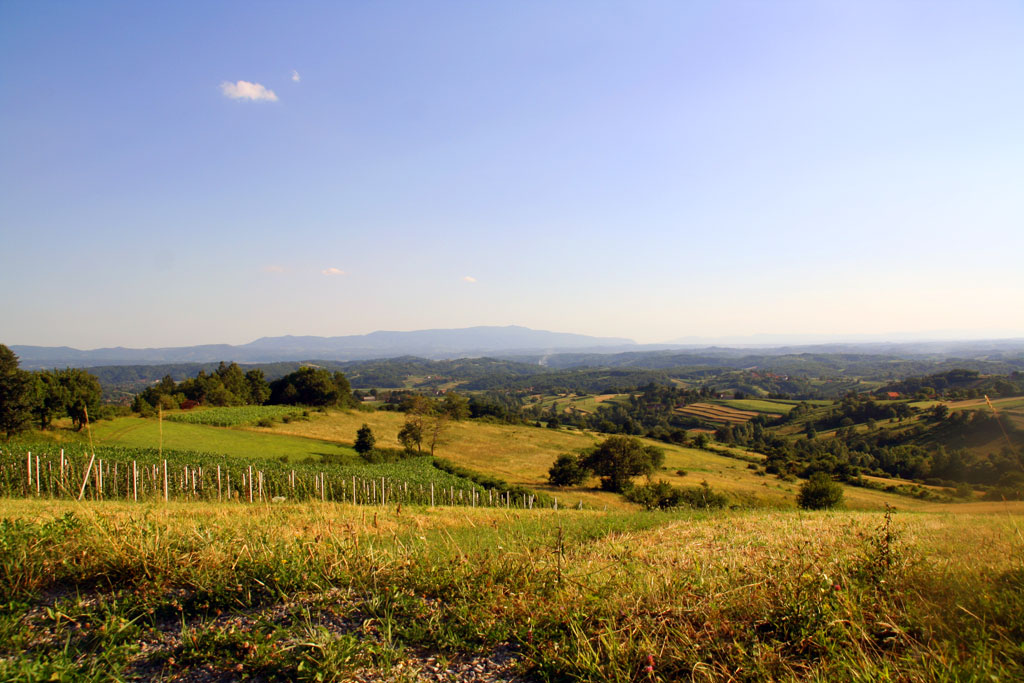|
Hrvatski (other)
In Serbo-Croatian, ''hrvatski'' is the masculine adjectival form meaning "Croatian", both in the plural and singular; it is ''hrvatska'' in the feminine singular, ''hrvatske'' in the feminine plural, ''hrvatsko'' in the neutral singular, ''hrvatska'' in the neutral plural. The word ''hrvatski'' is also used to refer to the Croatian language (the standard variety of Serbo-Croatian used by Croats), whereas ''Hrvatska'' (first letter capital) is the native name for Croatia, the country. As such, all four forms (''hrvatski'', ''hrvatska'', ''hrvatske'' and ''hrvatsko'') commonly appear in native names of many Croatian government institutions, companies, political parties, organisations and sports clubs, as well as some place names. It may refer to: Organisations and companies * ''Hrvatska akademija znanosti i umjetnosti'' or HAZU, Croatian Academy of Sciences and Arts * '' Hrvatska elektroprivreda'' or HEP, national power company * ''Hrvatska pošta'' or HP, Croatian Post * '' Hrva ... [...More Info...] [...Related Items...] OR: [Wikipedia] [Google] [Baidu] |
Serbo-Croatian
Serbo-Croatian () – also called Serbo-Croat (), Serbo-Croat-Bosnian (SCB), Bosnian-Croatian-Serbian (BCS), and Bosnian-Croatian-Montenegrin-Serbian (BCMS) – is a South Slavic language and the primary language of Serbia, Croatia, Bosnia and Herzegovina, and Montenegro. It is a pluricentric language with four mutually intelligible standard varieties, namely Serbian, Croatian, Bosnian, and Montenegrin. South Slavic languages historically formed a continuum. The turbulent history of the area, particularly due to expansion of the Ottoman Empire, resulted in a patchwork of dialectal and religious differences. Due to population migrations, Shtokavian became the most widespread dialect in the western Balkans, intruding westwards into the area previously occupied by Chakavian and Kajkavian (which further blend into Slovenian in the northwest). Bosniaks, Croats and Serbs differ in religion and were historically often part of different cultural circles, although a large part ... [...More Info...] [...Related Items...] OR: [Wikipedia] [Google] [Baidu] |
Hrvatsko Ratno Zrakoplovstvo I Protuzračna Obrana
The Croatian Air Force ( hr, Hrvatsko ratno zrakoplovstvo or HRZ) is a branch of the Croatian Armed Forces whose primary task is to ensure the sovereignty of the airspace of the Republic of Croatia and to provide aviation support to other branches in the implementation of their tasks in joint operations. It is also the carrier and the organiser of the integrated anti-aircraft defence system of the Republic of Croatia. Aviation history The Croatian Air Force as it is known today was established on 12 December 1991, during the Croatian War of Independence. After 2003, a large portion of the fleet was modernised or completely overhauled and the rest of the outdated fleet was retired. Croatia also acquired new-build transport helicopters, fire-fighting aircraft and basic training aircraft during this time. The planned acquisitions for additional fixed and rotary-wing transports and fighter aircraft were repeatedly postponed due to a difficult economic situation. Duties The primary ... [...More Info...] [...Related Items...] OR: [Wikipedia] [Google] [Baidu] |
Hrvatski Top Model
Hrvatski Top Model ( en, Croatia's Top Model) is a Croatian reality television series based on Tyra Banks' ''America's Next Top Model'' and is aired on RTL. The show pits contestants against each other in a variety of competitions to determine who will win the title of the new Croatian "Top Model", as well as a modelling contract with an agency in hopes of a promising career start in the modeling industry. Croatian top model Tatjana Jurić fills the host role which Tyra Banks performed in the original series. She is the head of the search as well as a mentor for the 16 girls who have been chosen to live in a house together in Zagreb. Jurić and the panel of judges, which includes Borut Mihalić, Boris Bašić, Damir Hoyka and Boris Cavlina Jurić, judge the girls each week. Usually one, but often two girls are eliminated until only three girls are left. Croatian fashion designer Marco Grubnic had several appearances on the first season to introduce the girls to the fashion indu ... [...More Info...] [...Related Items...] OR: [Wikipedia] [Google] [Baidu] |
Hrvatski Band Aid
Croatian (; ' ) is the standardized variety of the Serbo-Croatian pluricentric language used by Croats, principally in Croatia, Bosnia and Herzegovina, the Serbian province of Vojvodina, and other neighboring countries. It is the official and literary standard of Croatia and one of the official languages of the European Union. Croatian is also one of the official languages of Bosnia and Herzegovina and a recognized minority language in Serbia and neighboring countries. Standard Croatian is based on the most widespread dialect of Serbo-Croatian, Shtokavian, more specifically on Eastern Herzegovinian, which is also the basis of Standard Serbian, Bosnian, and Montenegrin. In the mid-18th century, the first attempts to provide a Croatian literary standard began on the basis of the Neo-Shtokavian dialect that served as a supraregional ''lingua franca'' pushing back regional Chakavian, Kajkavian, and Shtokavian vernaculars. The decisive role was played by Croatian Vukovians, ... [...More Info...] [...Related Items...] OR: [Wikipedia] [Google] [Baidu] |
NK Hrvatski Dragovoljac
Nogometni klub Hrvatski dragovoljac ( en, Football Club Hrvatski dragovoljac), commonly referred to as NK Hrvatski dragovoljac or simply Hrvatski dragovoljac, is a Croatian football club based in the Novi Zagreb neighbourhood of the country's capital city of Zagreb. The team's fans are known as the "Black Warriors" ( hr, Crni ratnici). The club's home ground is Stadion NŠC Stjepan Spajić, which has a capacity of 5,000. History The club was founded in 1975 as NK Trnsko 75, with its name being changed to ONK Novi Zagreb in 1976 and NK Novi Zagreb in 1990. When the Croatian War of Independence began in 1991, many of the club's members volunteered to fight. In honour of those who fought and those who lost their lives in the war, the club was renamed Hrvatski Dragovoljac (Croatian Volunteer) when they resumed play in 1994. They also adopted a new logo incorporating black as the team's colour. In 1995, the club won promotion to the former Croatian First B-League, where they finis ... [...More Info...] [...Related Items...] OR: [Wikipedia] [Google] [Baidu] |
Hrvatski Leskovac
Hrvatski Leskovac is a settlement in the City of Zagreb county, Croatia. Demographics According to the 2021 census, its population was 2,659. As of 2011, it had a population of 2,687. It is connected by the D1 highway. In 2019, the settlement's first primary school opened. Sports It is also home to a football club, . See also * Leskovac, Serbia References Populated places in the City of Zagreb {{ZagrebCity-geo-stub ... [...More Info...] [...Related Items...] OR: [Wikipedia] [Google] [Baidu] |
Hrvatska Kostajnica
Hrvatska Kostajnica (; ; ), often just Kostajnica, is a small town in central Croatia. It is located on the Una river in the Sisak-Moslavina County, south of Petrinja and Sisak and across the river from Bosanska Kostajnica in Bosnia and Herzegovina. History Middle Ages Kostajnica was first mentioned in the document by knights templar from 1240. This year is used as official birth year of this historic town. Its name is derived from the word ''kostanj'' ("chestnut"), as the nearby hills around the Una river are covered with forests of chestnut trees. Time of the first settlement is unknown, but town lies on very important Roman roads that were used for transporting salt and cotton. Since Roman roads were merged in the vicinity of the city it is believed that settlement dates much earlier than the first written document known today. Position of town is very similar to the town from old Roman documents known as “Oeneum”. Five Roman milestones were located in the city dating ba ... [...More Info...] [...Related Items...] OR: [Wikipedia] [Google] [Baidu] |
Hrvatska Dubica
Hrvatska Dubica is a village and a municipality in central Croatia in the Sisak-Moslavina County. It is located on the northern bank of the river Una, east of Hrvatska Kostajnica and southwest of Jasenovac and Novska. The town of Bosanska Dubica lies to the south of the municipality, in Bosnia and Herzegovina. Hrvatska Dubica is underdeveloped municipality which is statistically classified as the First Category Area of Special State Concern by the Government of Croatia. Demographics The municipality of Hrvatska Dubica has a population of 2,089 (2011 census), 75.30% (1,573) which are Croats and 22.40% (468) which are Serbs. Settlements * Baćin, population 217 * Donji Cerovljani, population 76 * Gornji Cerovljani, population 99 * Hrvatska Dubica, population 1,040 * Slabinja, population 348 * Živaja, population 309 Recent history During the Croatian War of Independence, Hrvatska Dubica was located in the area contested by Serb rebels. Most of the civilians fled the area ... [...More Info...] [...Related Items...] OR: [Wikipedia] [Google] [Baidu] |
Hrvatsko Primorje
Croatian Littoral ( hr, Hrvatsko primorje) is a historical name for the region of Croatia comprising mostly the coastal areas between traditional Dalmatia to the south, Mountainous Croatia to the north, Istria and the Kvarner Gulf of the Adriatic Sea to the west. The term "Croatian Littoral" developed in the 18th and 19th centuries, reflecting the complex development of Croatia in historical and geographical terms. The region saw frequent changes to its ruling powers since classical antiquity, including the Roman Empire, the Ostrogoths, the Lombards, the Byzantine Empire, the Frankish Empire, and the Croats, some of whose major historical heritage originates from the area—most notably the Baška tablet. The region and adjacent territories became a point of contention between major European powers, including the Republic of Venice, the Kingdom of Hungary, and the Habsburg and Ottoman Empires, as well as Austria, the First French Empire, the Kingdom of Italy, and Yugoslavia. ... [...More Info...] [...Related Items...] OR: [Wikipedia] [Google] [Baidu] |
Hrvatsko Zagorje
Hrvatsko Zagorje (; Croatian Zagorje; ''zagorje'' is Croatian for "backland" or "behind the hills") is a cultural region in northern Croatia, traditionally separated from the country's capital Zagreb by the Medvednica Mountain. It comprises the whole area north of Mount Medvednica up to Slovenia in the north and west, and up to the regions of Međimurje and Podravina in the north and east. The population of Zagorje is not recorded as such, as it is administratively divided among Krapina-Zagorje County (total population 142,432), and western and central part of Varaždin County (total population 183,730). The population of Zagorje can be reasonably estimated to exceed 300,000 people. In Croatia, the area is usually referred to simply as ''Zagorje'' (Croatian for "backland" or "behind the hills"; with respect to Medvednica). However, to avoid confusion with the nearby municipality of Zagorje ob Savi in Slovenia, the Croatian part is called ''Hrvatsko zagorje'', meanin ... [...More Info...] [...Related Items...] OR: [Wikipedia] [Google] [Baidu] |
Croatian Party Of Rights
The Croatian Party of Rights ( hr, Hrvatska stranka prava or HSP) is an extra-parliamentary nationalist political party in Croatia. The "right(s)" in the party's name refer to the legal and moral reasons that justify the independence and autonomy of Croatia. While the HSP has retained its old name, today it is a far-right party with an ethnocentric platform. Founding The HSP, along with other modern Croatian parties (such as Croatian Pure Party of Rights), claim legacy to the Party of Rights which was founded in 1861 and existed until 1929. During the Croatian War of Independence (1991–1995) A group of people restored Croatian Party of Rights on 25 February 1990. Dobroslav Paraga, the first president of the party acknowledged the historical bounds with the older Party of Rights. Soon, the party faced splits. Krešimir Pavelić, a former secretary of the party, became president of the new Croatian Democratic Party of Rights. Some other ''rights'' parties that claimed origin fro ... [...More Info...] [...Related Items...] OR: [Wikipedia] [Google] [Baidu] |




